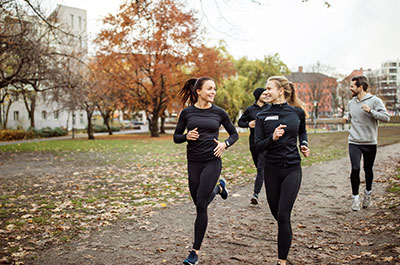The benefits of gardening go far beyond connecting to nature and creating a beautiful yard. According to the Centers for Disease Control and Prevention (CDC), gardening qualifies as exercise. In fact, getting out in the yard for just 30-45 minutes can burn up to 300 calories.
Routine gardening activities, such as raking, weeding and trimming, engage multiple muscle groups at once, improving your overall fitness level. Want more specifics? Here are seven strategies to transform gardening duties into a bona fide workout:
1. Create a routine. Treat gardening like any workout: Stretch for 10 minutes, then alternate light activities with heavier ones. You might rake for a little while, then dig a few holes, then prune. Cool down for 10 to 15 minutes--perhaps by snipping flowers or picking vegetables--and you’re done! Just keep in mind that gardening requires endurance, strength and flexibility, so it’s important to build up gradually.
2. Dig deep. Digging is one of the highest-intensity gardening activities. Pushing down with one foot, turning over the soil, then down with the other foot and bringing the soil to the top engages multiple muscle groups and forces you to get your hands dirty. Bottom line: Take every opportunity to dig.

3. Mix it up. Lifting and carrying 40-pound bags of mulch, stretching to reach low-hanging fruit and pushing a lawn mower around a large plot can be physically draining. Your best bet: alternate between activities like raking, mowing, weeding, pruning and digging. And if you’re spreading mulch, be sure to switch hands periodically.
4. Watch your form. Bending and twisting can cause injury if you’re not careful. In fact, bending at the waist instead of the knees is responsible for many gardening injuries. If you’re lifting heavy items, bend at the knees. Use long-handed tools to rake and hoe to avoid back pain. And if something hurts, stop what you’re doing and take a break.
5. Go old school. Use manual clippers, shears and mowers instead of tools that plug into an outlet. Using a traditional push mower, for example, requires you to use your legs, upper body strength and core. That's not the case with power mowers, or the type that you sit on and steer.
6. Build in strength training. Puttering around the garden may not qualify as high-intensity exercise, but you can incorporate strength-training exercises into your gardening tasks to increase the intensity. Do mini-squats and engage your core while you’re pulling weeds. Take break from digging and do some lunges. You can even pause while you’re mowing the lawn to do triceps.
7. Get your kids involved. Gardening is a great activity for the whole family. Inviting your kids to join you in the garden not only ensures they’ll get some activity, it also offers a great opportunity for bonding. You can use gardening as a backdrop for games. Make mowing the lawn into a game of tag (safely of course), see who can dig the deepest ditch or pull the most weeds, or create a factory line with each family member performing a different task.
No matter how you slice it, our bodies need consistent motion to function optimally. Gardening is just one way to promote activity when you otherwise might be sitting. After all, if the weeds are infiltrating your yard, you have built-in motivation to get in the dirt and work. Time passes quickly, and before you know it, you’ve racked up 60 minutes of exercise.
Just keep in mind that gardening tools, methods, conditions and plot size all impact the intensity of your workout. If you’ve been inactive for months, start slowly. Apply sunscreen, wear a broad-brimmed hat, and be sure to take frequent water breaks. And don’t forget to wear insect repellant. You don’t want to become an insect’s lunch when you’re growing your own food.
Christina Chapski, Ed.D., AT, ATC, is the Director of Athletic Training and Community Outreach at Henry Ford Health. Read more of Christina's articles.



